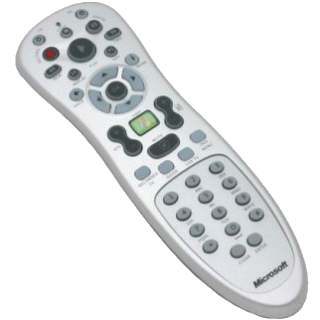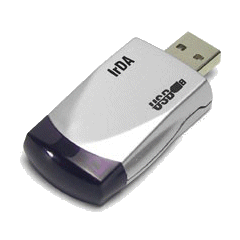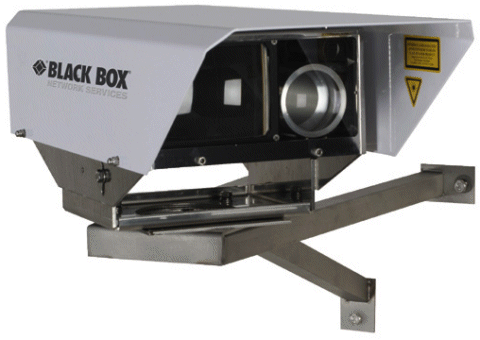Infrared Communications Systems
Infrared (IR) light is electromagnetic radiation with a wavelength longer than that of visible light, but shorter than that of microwaves. The name consists of the Latin word infra (meaning below) and red, which is the color of the longest wavelength visible light. The wavelength of infrared radiation varies from about 750 nanometres (the near infrared) to 1 millimetre (the far infrared). Frequencies range from about 300 GHz to 400 THz. Infrared transmission systems are widely used for short-range communications. A common application for infrared is in remote control systems for televisons, VCRs, DVD players and set-top boxes of various descriptions. Infrared transmitters are usually relatively directional, cheap, lightweight, reliable and easy to manufacture. The main disadvantage is that infrared light will not pass through solid objects. On the plus side, an infrared system in one room of a building will not interfere with similar systems in nearby rooms, and the possibility of eavesdropping is far lower than with radio-based systems. Infrared communication is therefore a realistic alternative for indoor wireless LANs.

A Microsoft Windows Media Center remote control unit
The Infrared Data Association (IrDA), an industry-sponsored organisation set up in 1993 to develop standards for infrared communication hardware and software, defines the physical interface specifications and communications protocol standards for short-range data communications in applications such as personal area networks (PANs). IrDA interfaces have been extensively used for communication between devices such as palmtop and laptop computers, mobile phones, and personal data assistants (PDAs). In recent years, Bluetooth has been offered as an alternative interface in such devices, but since the early 2000s has largely replaced IrDa as the wireless interface in new products, since the cost of this technology has fallen rapidly, and unlike IrDa it does not require direct line of sight and can support hardware such as wireless mice and keyboards. IrDa is still used in environments where interference makes radio-based wireless technologies unusable, and has the additional advantage that its bandwidth is not subject to government regulation.
IrDa transceivers communicate using pulses of infrared light transmitted in a directionally focused cone that extends to an angle of 15o either side of the transmission's centreline. Although the standard requires a minimum range of 1 metre for a standard power output, commercially available products have ranges varying from less than a metre up to several metres. Communication is half-duplex, since the receiver of the infrared device is effectively "blinded" by the light of its own transmission. Data rates vary from 9.6 kbps up to 16 Mbps (9.6 kbps is the lowest common denominator for all devices, and as such is used for negotiation between communicationg devices). An Ultra Fast Infrared (UFIR) protocol is currently being developed that will support data rates of up to 100 Mbps. IrDa devices are broadly described as either primary or secondary devices. The primary device initiates communication, sends commands, and handles data-flow control (handshaking). Secondary devices simply respond to requests from primary devices.

A USB IrDA dongle enables the transfer of data between a PC and devices such as PDAs, laptops, and mobile phones
Infrared laser systems can also be used for long-range communication (up to about 2.4 kilometres), with a maximum projected data rate of 16 Mbps. Such systems are stricly point-to-point (line-of-sight) systems, and are sensitive to fog and other atmospheric conditions. Typical applications include building-to-building transmission links for metropolitan or campus-area networks, and transmitting and receiving devices are typically located on rooftops to provide unobstructed line-of-sight links. Diffuse (or non-line-of-sight) systems may be used for wireless LAN connectivity, in which the link between transmitter and receiver is maintained by "bouncing" the transmitted signals off reflecting surfaces such as walls and ceilings. The transmitter employs a wide-angle transmit beam, and the receiver has a wide-angle detector. The specifications for infrared wireless LANs are covered in the IEEE 802.11 standard.

A Black Box Network Services LaserLink 1000 network extender
An infrared transmitting device, either a light-emitting diode (LED) or a laser diode, converts an electrical signal to an optical signal. LEDs have a naturally wide transmission path and are suitable for short-range applications. They are also much safer than laser diodes for indoor use. Laser diodes have narrow transmit beams and a relatively narrow spectral width, making them more suitable for point-to-point long-range applications. Most systems use intensity modulation with direct detection (IM/DD) to achieve optical modulation and demodulation. The transmitted signal's intensity or power is proportional to the modulating signal, and a photodetector at the receiver produces an output current proportional to the received optical signal intensity. In most operating environments, the detector is also illuminated by other sources of light energy, include ambient light sources such as sunlight or artificial light sources. These light sources represent a significant noise component at the receiver. The availability of effective, low-cost LEDs and photodiodes operating in the 800-1000 nanometre range has led to the requirement for transmitters to have a peak-power wavelength of between 850 and 950 nanometres.
